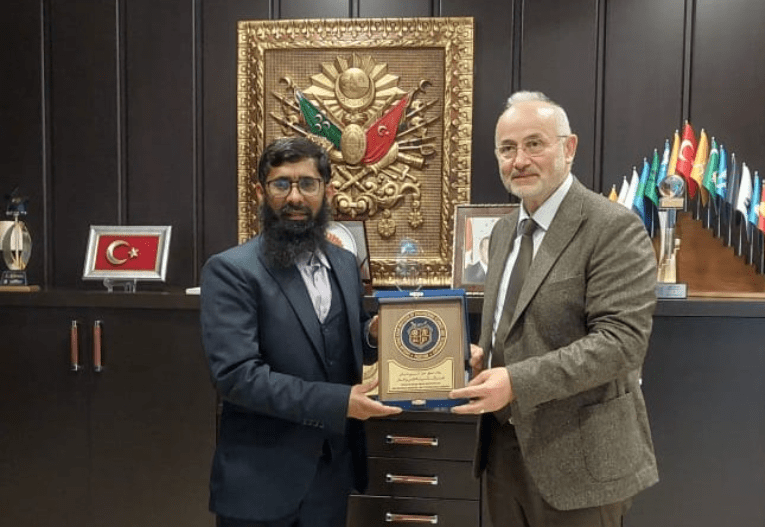- Turkish and Pakistani scholars collaborate on AI projects to address common issues.
- Agreement between Ondokuz Mayis University and Ghulam Ishaq Khan Institute facilitates joint initiatives.
- Initial discussions identify potential projects in computer and agricultural engineering.
- Emphasis on cultural understanding alongside technological advancement.
- Plans for Large Language Models to facilitate digital translation between Urdu and Turkish.
- Anticipated funding support from universities and research councils.
- Collaboration extends beyond academia, strengthening regional ties.
- Expansion plans include joint projects with universities in Central Asia.
Main AI News:
Collaborative endeavors between Turkish and Pakistani scholars are poised to address mutual challenges through cutting-edge technologies, notably artificial intelligence (AI).
The partnership, facilitated by an agreement between Ondokuz Mayis University in Samsun, Turkey, and Pakistan’s Ghulam Ishaq Khan Institute of Engineering Sciences and Technology (GIKI), heralds a new era of cooperation. Initial discussions, held virtually in January, paved the way for joint projects aimed at leveraging AI in computer and agricultural engineering.
Masroor Hussain, Head of GIKI’s Computer Engineering and Data Science Department, highlighted the significance of this collaboration during his visit to the Turkish university. He outlined plans for four to five collaborative projects aimed at harnessing AI’s potential.
Agha Adeel Saadat, an American of Pakistani origin, catalyzed this partnership along with his associates. Their efforts, spanning various Turkish cities and provinces, culminated in laying the groundwork for university collaboration.
Speaking from Samsun, Ilkay Erken, Director of International Collaborations at Ondokuz Mayis University, emphasized the comprehensive nature of the memorandum of understanding (MoU) between the institutions. Erken stressed the importance of student and faculty exchanges, underscoring the mutual benefit of sharing experiences and expertise.
Moving beyond technological collaboration, Agha highlighted the importance of fostering cultural understanding. He emphasized the role of science and technology in bridging cultural divides and facilitating people-to-people connections.
According to Hussain, the collaboration will yield Large Language Models (LLMs) capable of seamless digital translation between Urdu and Turkish. This breakthrough will overcome the language barrier, facilitating deeper collaboration.
Agha echoed these sentiments, emphasizing that the collaboration extends beyond addressing shared challenges to strengthening cultural and academic ties. He envisions a more integrated and harmonious regional community as a result.
Both sides anticipate funding support from their respective universities, supplemented by backing from entities like the Scientific and Technological Research Council of Turkey (TUBITAK) and the Pakistan Science Foundation.
Explaining the choice of institutions for collaboration, Agha emphasized the cultural affinity between the Black Sea region and Pakistan. He underscored the hospitality and shared values that facilitated the selection of Ondokuz Mayis University in Samsun.
Erken emphasized the historical resonance of collaboration with the Pakistani university, highlighting shared narratives and experiences.
Looking ahead, Agha revealed plans to expand similar joint projects with universities in Central Asia, starting with initiatives in Uzbekistan. This expansion underscores a broader commitment to fostering collaboration and innovation across borders.
Conclusion:
The collaboration between Turkish and Pakistani academics in AI initiatives signifies a strategic alignment toward addressing shared challenges and fostering innovation. This partnership not only underscores the importance of cross-border collaboration but also highlights the potential for technological advancements to bridge cultural divides and facilitate regional integration. For the market, this collaboration opens up opportunities for joint research endeavors, knowledge exchange, and the development of commercially viable solutions, ultimately driving growth and competitiveness in the global technology landscape.

